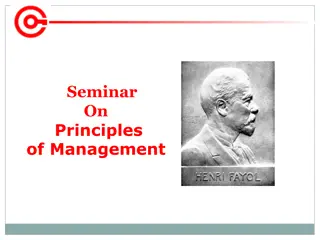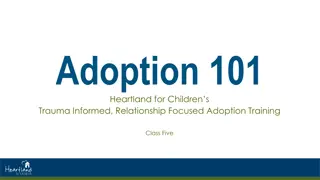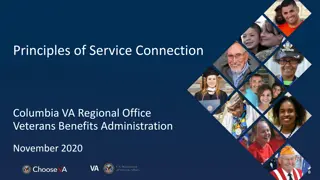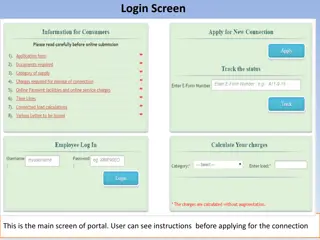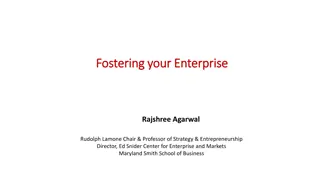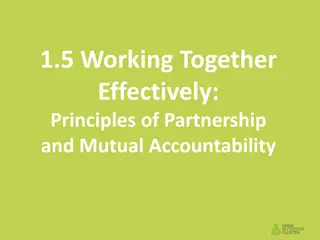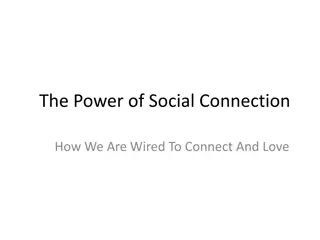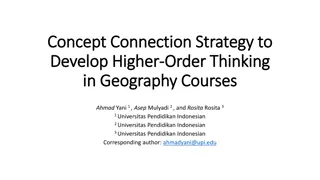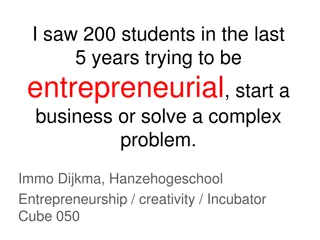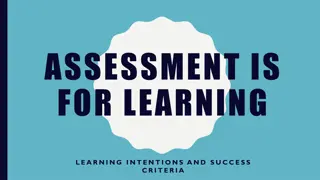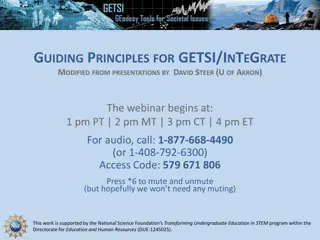Principles of Effective Connection for Success
Understanding and applying the principles of connection can significantly enhance influence, leadership skills, and overall success. Key aspects include fostering a deep connection with others, showing appreciation, trust, and empathy, as well as genuinely caring for people. Studies have shown a direct correlation between achievement and the ability to connect with and care for others, highlighting the importance of empathy and effective communication in personal and professional interactions.
Download Presentation

Please find below an Image/Link to download the presentation.
The content on the website is provided AS IS for your information and personal use only. It may not be sold, licensed, or shared on other websites without obtaining consent from the author.If you encounter any issues during the download, it is possible that the publisher has removed the file from their server.
You are allowed to download the files provided on this website for personal or commercial use, subject to the condition that they are used lawfully. All files are the property of their respective owners.
The content on the website is provided AS IS for your information and personal use only. It may not be sold, licensed, or shared on other websites without obtaining consent from the author.
E N D
Presentation Transcript
Welcome John Doe
Connecting Principles #1 INFLUENCE Principle #1 - Connecting increases your influence in every situation. Successful US Presidents exhibit 5 qualities: 1. Vision 2. Pragmatism 3. Consensus Building 4. Charisma 5. Trustworthiness 4 of the 5 skills to being a successful leader have to do with connecting.
Connecting Principles #1 INFLUENCE Most people who disconnect aren t aware. Connecting Signals Unsolicited Appreciation: people say positive things Unguarded Openness: people demonstrate trust Extra Effort: people go the extra mile Emotional Bondedness: people display a connection on an emotional level Increased Communication: people express themselves more readily Enjoyable Experiences: people feel good about what they are doing Positive Energy: people s emotional batteries are charged by being together Growing Synergy: people s effectiveness is greater than the sum of the contributions Unconditional Love: people are accepting without reservation
Connecting Principles #1 INFLUENCE Jay Hall, PhD, Teleometrics, conducted a study on the performance of 16,000 executives. CONCLUSION: direct correlation between achievement and the ability to care for and connect with people.
Connecting Principles #1 INFLUENCE HIGH ACHIEVERS AVERAGE ACHIEVERS LOW ACHIEVERS Care about People as well as Profits Concentrate on Production Preoccupied with their own Security View subordinates Optimistically Focus more on their own Status Show a basic Distrust of subordinates Reluctant to seek advice from those under them Seek advice from those under them Do not seek advice Avoid communication and rely on policy manuals Listen only to superiors Actively listen
Connecting Principles #2 OTHERS Principle #2 - Connecting is all about OTHERS and not ourselves. Why do we focus on ourselves and not others? 1. Immaturity Maturity is the ability to see and act on behalf of others 2. Ego 3. Failure to value everyone 3 Connecting Questions: 1. Do you CARE for me? 2. Can you HELP me? 3. Can I TRUST you?
Connecting Principles #3 COMMUNICATION Principle #3 Connecting goes beyond words 3 Components to Face-to-Face communication WORDS TONE OF VOICE BODY LANGUAGE How others believe what we say when we communicate: What we say, 7% , 0 The way we say it, 38% What others see, 55% >90% of the impression that we often convey has nothing to do with what we actually say!
Connecting Principles #3 COMMUNICATION 3 Components to Communication Thought Action Emotion
Connecting Principles #3 COMMUNICATION Communication Breakdowns Breakdown Thought knowing Emotion feeling Action - doing Dispassionate I know this I do not feel this Theoretical I know this I do not do this Unfounded I do not know this I feel this Hypocritical I feel this I do not do this Presumptuous I do not know this I do this Mechanical I do not feel this I do this
Connecting Principles #3 COMMUNICATION Action something we do; connecting visually; what people see Thought something we know; connecting intellectually; what people understand Emotion something we feel; connecting emotionally; what people feel
Connecting Principles #4 ENERGY Principle #4 Connecting always requires ENERGY 4 Unpardonable sins of a communicator: Unprepared Uncommitted Uninteresting Uncomfortable 3 of the 4 require a lot of effort and energy Connecting requires: 1. Initiative go first! 2. Clarity prepare 3. Patience slow down 4. Selflessness give 5. Stamina recharge
Connecting Principles #5 SKILL Principle #5 Connecting is more SKILL than natural talent Relationships Who you know Ability Sacrifice What you How you live can do Successful Connecting Success Insight What you have done What you know
Connecting Practices #1 COMMON GROUND Practice #1 Connectors connect on common ground Barriers to finding common ground: Assumption Arrogance Control Indifference
Connecting Practices #1 COMMON GROUND Choices to finding common ground: Listening Availability Thoughtfulness Questions Likeability Openness Adaptability Humility
Connecting Practices #2 Simplicity Practice #2 Connectors do the difficult work of keeping it SIMPLE 4 components to connect through communication Humor Heart Hope Help Three S s Art of Simplicity Keep it Simple 1. Talk to people, not above them 2. Get to the point 3. Say it over and over and over again 4. Say it clearly 5. Say less Say it Slowly Have a Smile
Connecting Practices #3 EXPERIENCE Practice #3 Create an EXPERIENCE everyone enjoys How to be interesting: 1. Take responsibility for your listeners 2. Communicate in their world 3. Capture people s attention from the start 4. Say it so it sticks
Connecting Practices #4 INSPIRE Practice #4 Connectors INSPIRE people Inspiration Equation What people KNOW What people SEE What people FEEL Inspiration What do people need to FEEL? What do people need to KNOW? What do people need to SEE? That you understand them and are focused on them That you have high expectations of them Your conviction Your example Your confidence in yourself and them Your gratitude for them
Connecting Practices #5 CREDIBILITY Practice #5 CREDIBILITY is the currency that connectors have Credibility Checklist 1. Have I connected with myself? 2. Have I made right my wrongs? 3. Am I accountable? 4. Do I lead like I live? 5. Do I tell the truth? 6. Am I vulnerable? 7. Am I following the Golden Rule? 8. Do I deliver results?
Thank you John Doe
This workforce solution is funded in part by the IHUM Consortium which is 100% financed through a $15,000,000 grant from the U.S. Department of Labor s Employment and Training Administration. The product was created by the grantee and does not necessarily reflect the official position of the U.S. Department of Labor. The Department of Labor makes no guarantees, warranties, or assurances of any kind, express or implied, with respect to such information, including any information on linked sites and including, but not limited to, accuracy of the information or its completeness, timeliness, usefulness, adequacy, continued availability, or ownership. This work is licensed under the Creative Commons Attribution 4.0 International License. To view a copy of this license, visit http://creativecommons.org/licenses/by/4.0/. Creative Commons License



